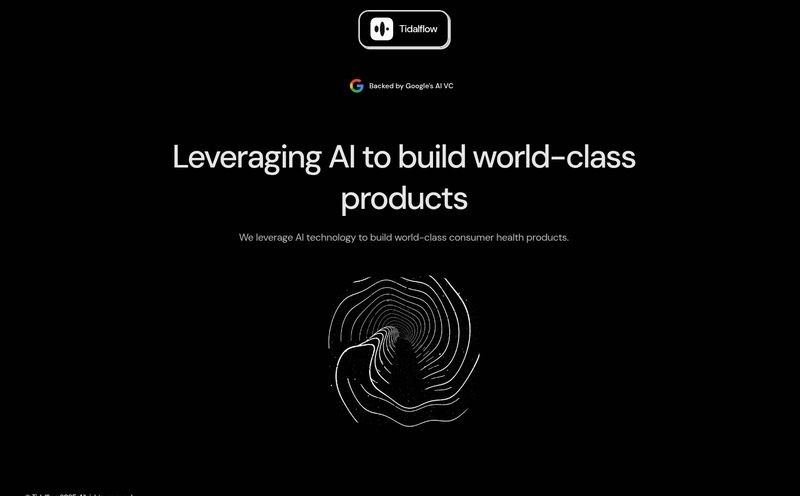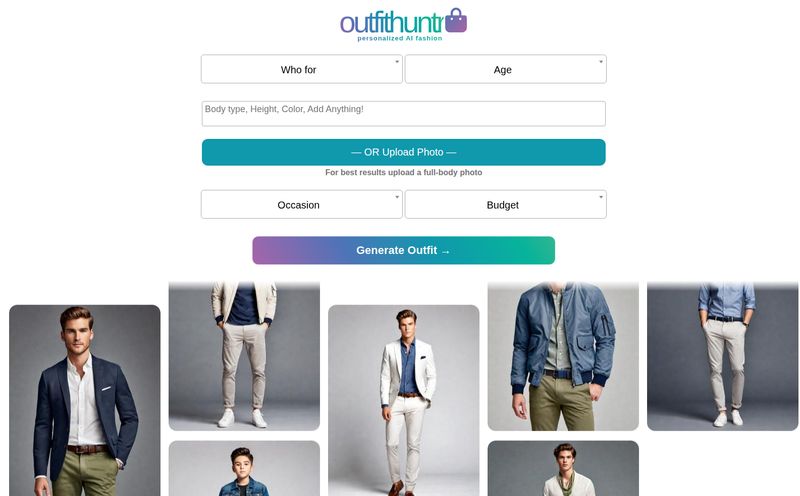If you're in the fashion e-commerce game, you know the grind. You've sourced or designed an amazing new collection, the fabric is perfect, the cuts are sharp. But now comes the part that always feels like a mountain: the product photography. Suddenly you're a logistics manager, juggling model agencies, photographers, studio rentals, and retouching fees. It’s a cash-burning, time-sucking vortex that can stall your launch for weeks.
I’ve been there. I once managed a campaign where our lead model got sick the day of the shoot. The scramble, the cost, the sheer panic… it still gives me a cold sweat. For years, this has just been “the cost of doing business.” But what if it wasn’t?
The buzz around AI in marketing isn't new, but its application in the visual-heavy world of fashion has been… well, a bit clunky. Until now, maybe. I’ve been keeping my eye on a new platform called Resona.ai, and it’s promising to solve this exact headache. The claim is simple and bold: turn a boring photo of your clothes on a mannequin into a professional, on-model photoshoot. Instantly.
Sound too good to be true? I thought so too. So let's get into it.
So, What Exactly Is Resona.ai?
Think of Resona.ai as a digital casting agency and photo studio that fits on your laptop. At its core, it’s an AI-powered tool designed specifically for fashion retailers. The process, as they sell it, is deceptively simple: you take a picture of your garment on a dummy (or mannequin), upload it to their platform, and then... magic happens.
The AI takes that flat, lifeless dummy shot and generates a high-quality image of a human model wearing your product. You can even choose models that fit your brand's aesthetic. It’s designed to be a three-step process, which, for anyone who’s ever wrangled a 10-person photoshoot crew, sounds like an absolute dream.
The Endless Headache of E-commerce Photography
Before we look at how Resona works, we need to really appreciate the problem it's trying to solve. For small to medium-sized brands, traditional photoshoots are a killer. You have the photographer’s day rate, the model’s fee, the studio rental, the stylist, the hair and makeup artist, and then the post-production and retouching costs. It adds up FAST. We’re talking thousands of dollars before you’ve even sold a single T-shirt.
And then there’s the time. Coordinating everyone’s schedule is a nightmare. The actual shoot takes a day, but the turnaround for edited photos can be another week or two. In the world of fast fashion and ever-shifting trends, that delay means lost sales. Your product is sitting in a warehouse instead of getting in front of customers.
But the biggest conversation in the industry right now, and rightly so, is about diversity and representation. Your customers come in all shapes, sizes, and skin tones. They want to see what your clothes will look like on someone who looks like them. But hiring a diverse lineup of models for every single product? That multiplies your costs exponentially. Most brands end up picking one or two models that fit a general “vibe,” and hope for the best. It's a compromise that none of us feel great about.
How Resona.ai Flips the Script
This is where a tool like Resona.ai gets really interesting. It’s not just about making things cheaper; it's about changing the workflow entirely.
Slashing Your Photoshoot Budget
The most obvious win here is the cost. Let's be blunt. By eliminating the need for live models, photographers, and studios for every shot, you’re looking at massive savings. Imagine reallocating that budget toward your CPC campaigns or developing new products. For a startup brand, this isn't just a saving; it could be the difference between surviving your first year or not. You still need one good, well-lit photo on a mannequin, but that’s a far more controllable and cheaper task.
Getting Your Products Online Faster
Remember that time-to-market issue? Resona claims to turn photos around in a fraction of the time. What used to take weeks of coordination and post-production can now, in theory, be done in an afternoon. You get a new sample, snap a pic on the dummy, run it through the AI, and have product images ready for your Shopify store by the end of the day. That kind of speed is a serious competitive advantage.

Visit Resona.ai
Finally, True Diversity on Demand
For me, this is the most powerful feature. Resona.ai allows you to generate images with models of various ethnicities and body types. This is huge. Suddenly, A/B testing which model resonates best with a particular audience is trivial. You can show the same dress on three different models on the same product page, allowing customers to choose how they view it. A McKinsey report has shown how much consumers are demanding more inclusion from brands. This tool basically democratizes representation. It moves it from a costly logistical challenge to a simple menu selection. That’s a big deal.
Let's Be Real: The Potential Downsides
Okay, I’m an optimist, but I’m also a realist. No tool is perfect, especially one this new. Let's talk about the potential catches.
The Mannequin Prerequisite
First off, the system's output is only as good as its input. You can’t just throw a crumpled shirt on the floor and expect a Vogue-quality photo. You still need a good quality, well-lit photograph of your clothing on a mannequin. This means you need a decent camera, some basic lighting, and a good dummy. It’s less work than a full photoshoot, for sure, but it’s not zero work.
Can AI Really Replace a Human Model?
This is the big philosophical question, isnt it? A great model brings more than just a body; they bring personality, a unique pose, an energy that connects with the camera. There’s a risk that AI-generated images, while technically perfect, might feel a bit sterile or fall into the “uncanny valley.” For high-end luxury brands that sell a story and an artistic vision, I doubt this will replace their editorial shoots. But for straightforward e-commerce product listings? The trade-off might be worth it.
The Waitlist… Ugh.
As of right now, you can’t just sign up and start using Resona.ai. You have to join a waitlist. On one hand, this suggests there’s a ton of demand and they're being careful with their rollout. On the other hand, it's a bit of a bummer if you want to try it out today. Patience is a virtue, I guess.
What About the Price Tag?
This is the million-dollar question, isn't it? Currently, Resona.ai hasn't released public pricing information. This is typical for a platform in its early stages. I’d speculate we might see a tiered subscription model (e.g., X images per month) or possibly a pay-per-image system. Given the costs it replaces, they have a lot of room to create value. A price of, say, $5-$10 per generated image would still be a fraction of the cost of a traditional shot. But for now, we have to wait and see.
My Final Take: Is Resona.ai a Game Changer for Fashion Brands?
So, what’s the verdict? I think Resona.ai, and tools like it, are genuinely exciting. This isn't just another shiny object. It’s a potential solution to a real, expensive, and persistent problem for anyone selling clothes online.
It's probably not for the Guccis and Pradas of the world, who rely on iconic photographers and celebrity faces. But for the 99% of other brands? The independent designers on Etsy, the dropshippers scaling up, the established brands looking to expand their product catalog without breaking the bank? This could be revolutionary.
The ability to improve representation and speed up your workflow while cutting costs is a powerful trifecta. The technology will only get better, smoothing out any of the current uncanny-valley weirdness. It's not a complete replacement for human creativity, but it's an incredibly powerful new tool for the modern marketer's toolkit. I, for one, will be staying on that waitlist and am eager to see where this goes.
Frequently Asked Questions about Resona.ai
1. What is Resona.ai in simple terms?
Resona.ai is a software platform that uses artificial intelligence to turn photos of clothes on a mannequin into realistic photos of human models wearing those clothes. It's designed to save fashion brands time and money on product photography.
2. Do I still need to hire a photographer?
Yes, but in a much more limited capacity. You still need to take a high-quality, well-lit photo of your product on a mannequin to upload to the system. You just don't need the photographer, studio, and live model for the final shot.
3. How does Resona.ai help with model diversity?
The platform allows you to generate images using a variety of AI models with different ethnicities, body types, and looks. This means you can showcase your products on a diverse range of people without having to hire, schedule, and pay for multiple live models.
4. Is Resona.ai free to use?
Currently, pricing details for Resona.ai have not been made public. Access to the platform is via a waitlist on their website. It's expected to be a paid service, likely with a subscription or per-image cost structure.
5. Can the AI create unique poses or creative shots?
The AI's capabilities are based on the input photo. It primarily replaces the mannequin with a human model in a similar pose. It's more for creating clean, consistent e-commerce product images rather than highly artistic or uniquely posed editorial content. The creativity of a live model and photographer is one area where traditional shoots still hold an advantage.
Conclusion
The rise of AI in creative fields is something that makes a lot of people nervous, but I see it differently. Tools like Resona.ai aren't here to replace human ingenuity, but to augment it. They handle the repetitive, costly, and time-consuming tasks, freeing up brand owners and marketers to focus on what really matters: building a great brand, connecting with customers, and designing beautiful products. The future of e-commerce isn't about replacing humans with robots; it's about giving humans better tools to work with. And this looks like a very promising one indeed.
Reference and Sources
- Official Website: Resona.ai
- Industry Insights on Diversity: "Diversity and inclusion in the US fashion industry" - McKinsey & Company



